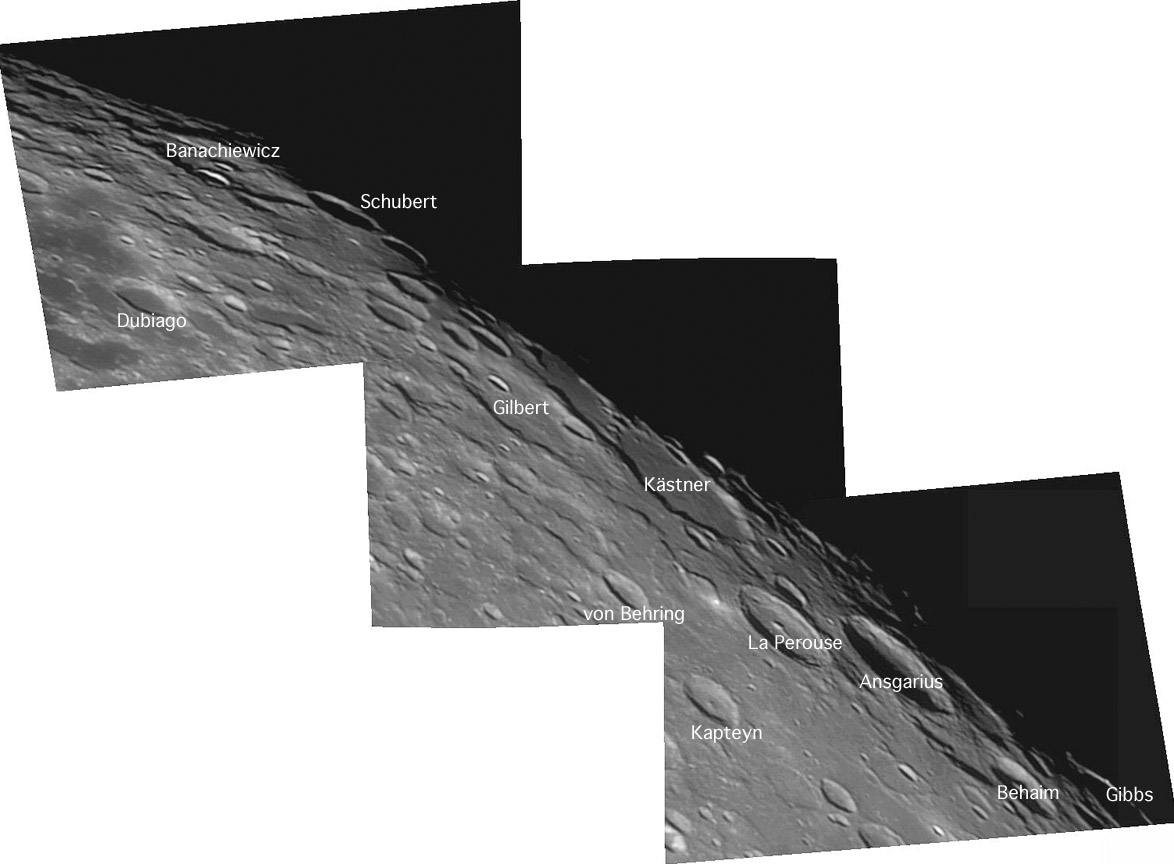
image by Rafael Benavides
I admit it. There are some places on the Moon where I get lost. The area limbward of Langrenus between Mare Smythii and Mare Australe is a prime example. Except for Humboldt there are no eye-catching features along this limb and I can’t identify craters here without a map. The lack of distinctive features also makes maps difficult to be easily used, so I annotated Rafael’s mosaic with the traditional named craters. I say “traditional” because I left off the nearly dozen names that were added to undistinguished craters in this area in the early 1970s. The excess of names is visually apparent by looking at page 124 of Rükl’s Atlas of the Moon - there are so many named craters that he had to use a smaller font to squeeze them onto one page. Why the names for craters that don’t deserve them? NASA was making the very high resolution Lunar Topographic Orthophotomaps (LTOs) and wanted each map to be titled for a named crater. So rather than having an LTO named Schubert Y they renamed that crater Nobili. But although the names are unwarranted, the LTOs are marvelous - the best topo data we have for the Moon. From them I can report, for example, that Dubiago is 50.6 km in diameter, 2.7 km deep, and has a rim 700 m high. And from Filipe’s image I can see that that precision data is for a relatively innocuous lava-floored crater.
Technical Details:
Skywatcher refractor + Barlow 3x + Filter MV-1 + ToUcam Pro I.
Related Links:
Rükl plates 38, 49 & 60
Lunar Orbiter IV view
SUPPORT LPOD - VISIT A SPONSOR (CLICK AN AD BELOW)!
Now you can support LPOD when you buy any book from Amazon thru LPOD!
COMMENTS?
Click on this icon File:PostIcon.jpg at the upper right to post a comment.



